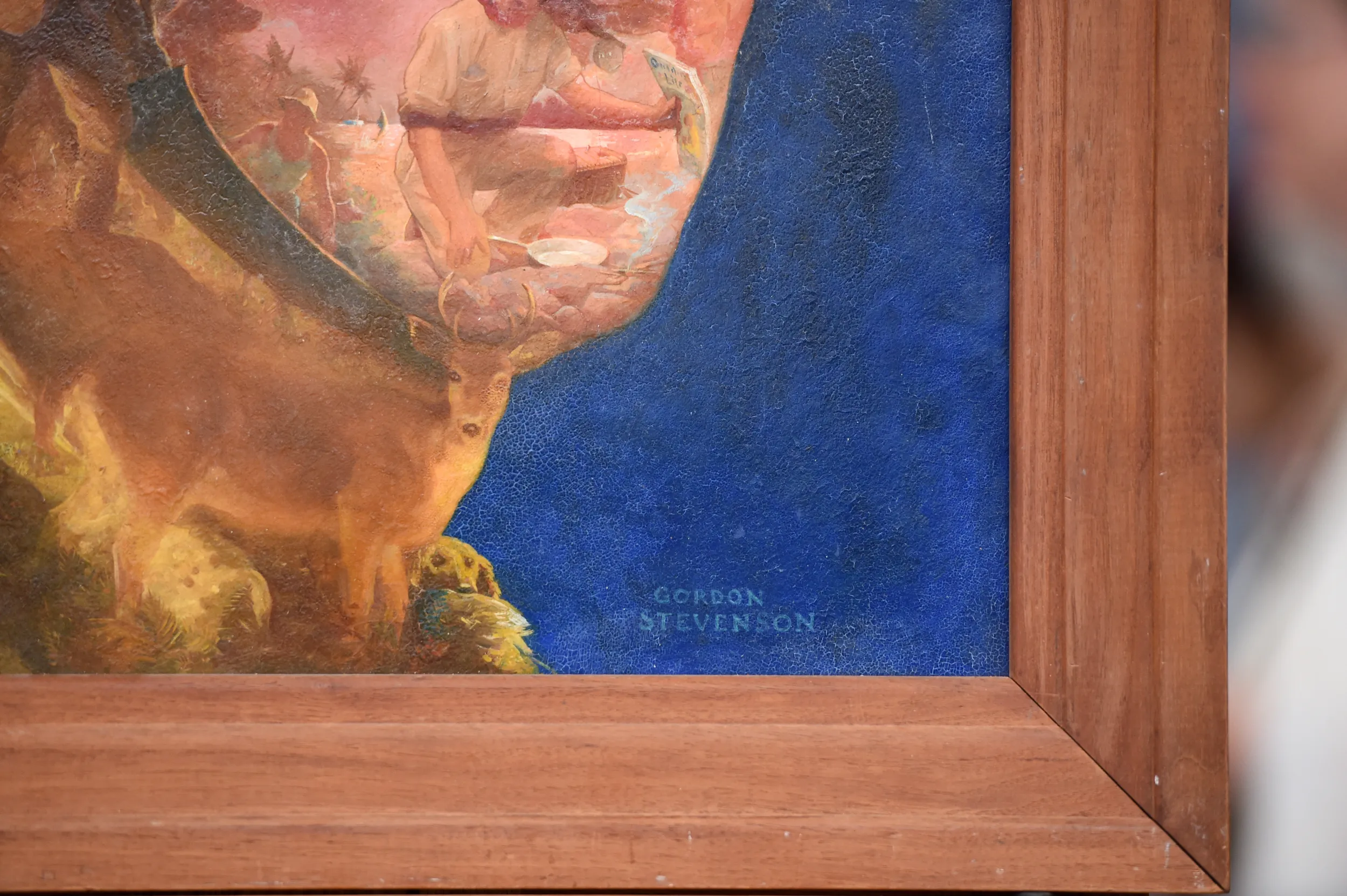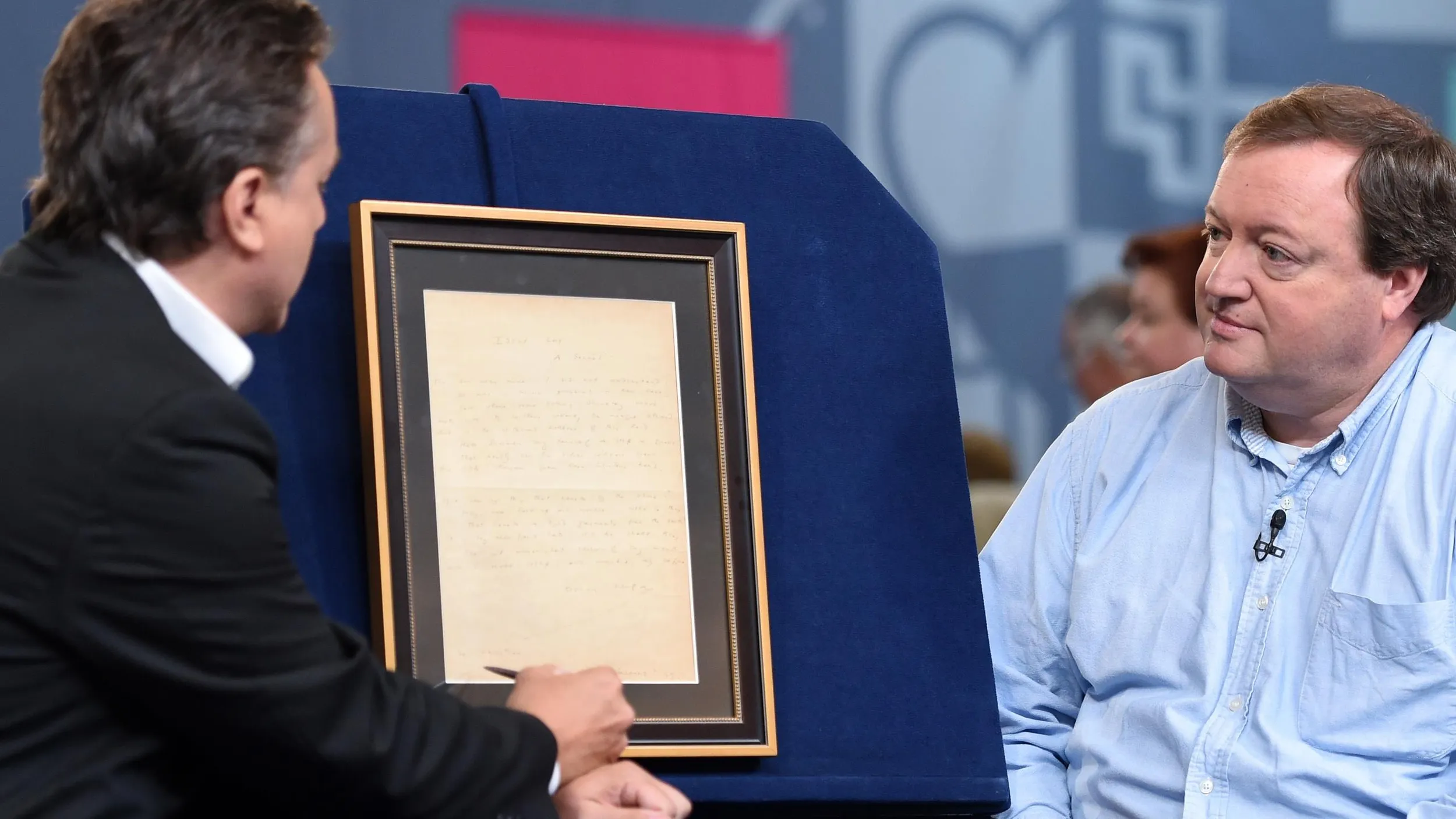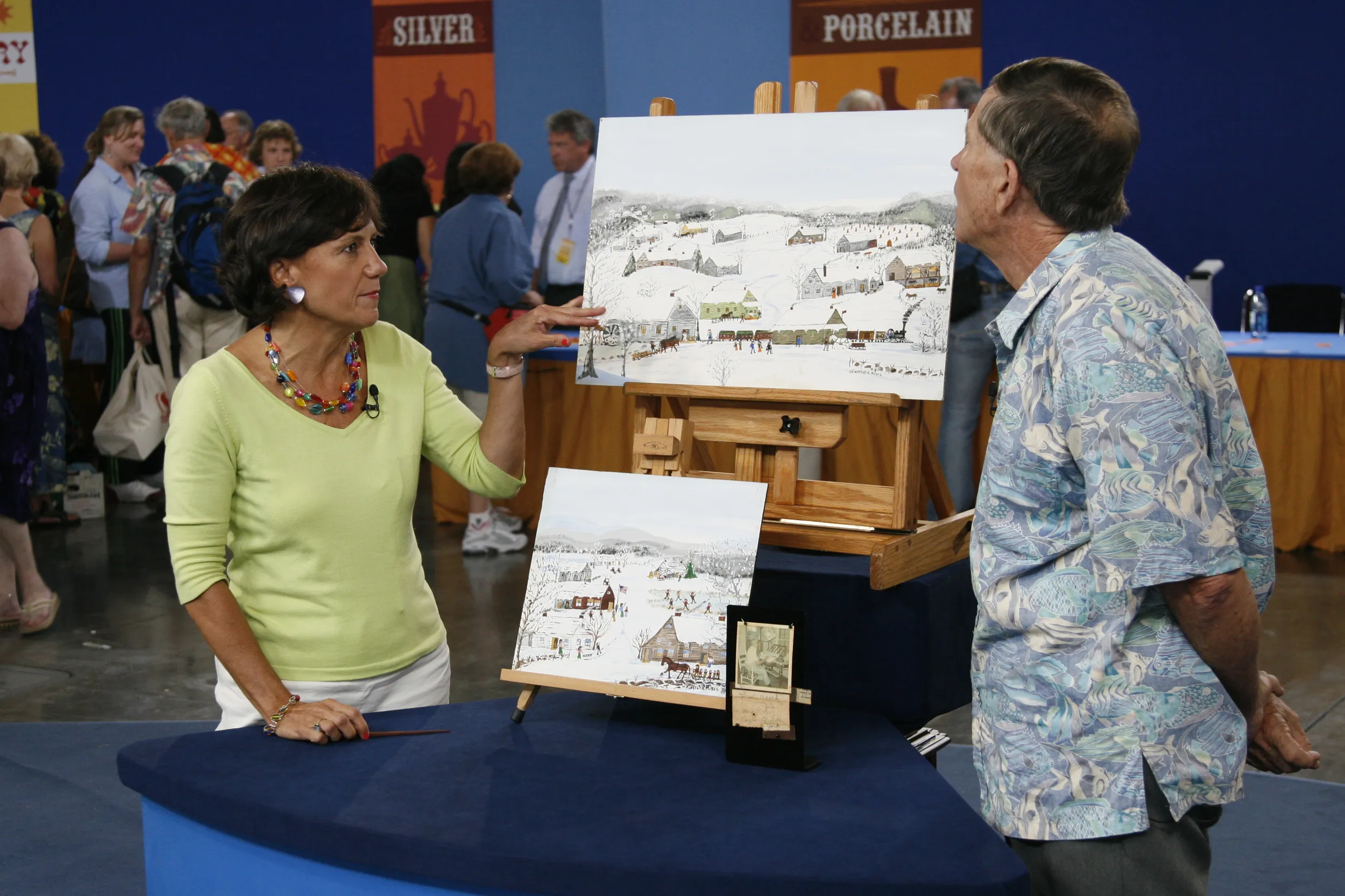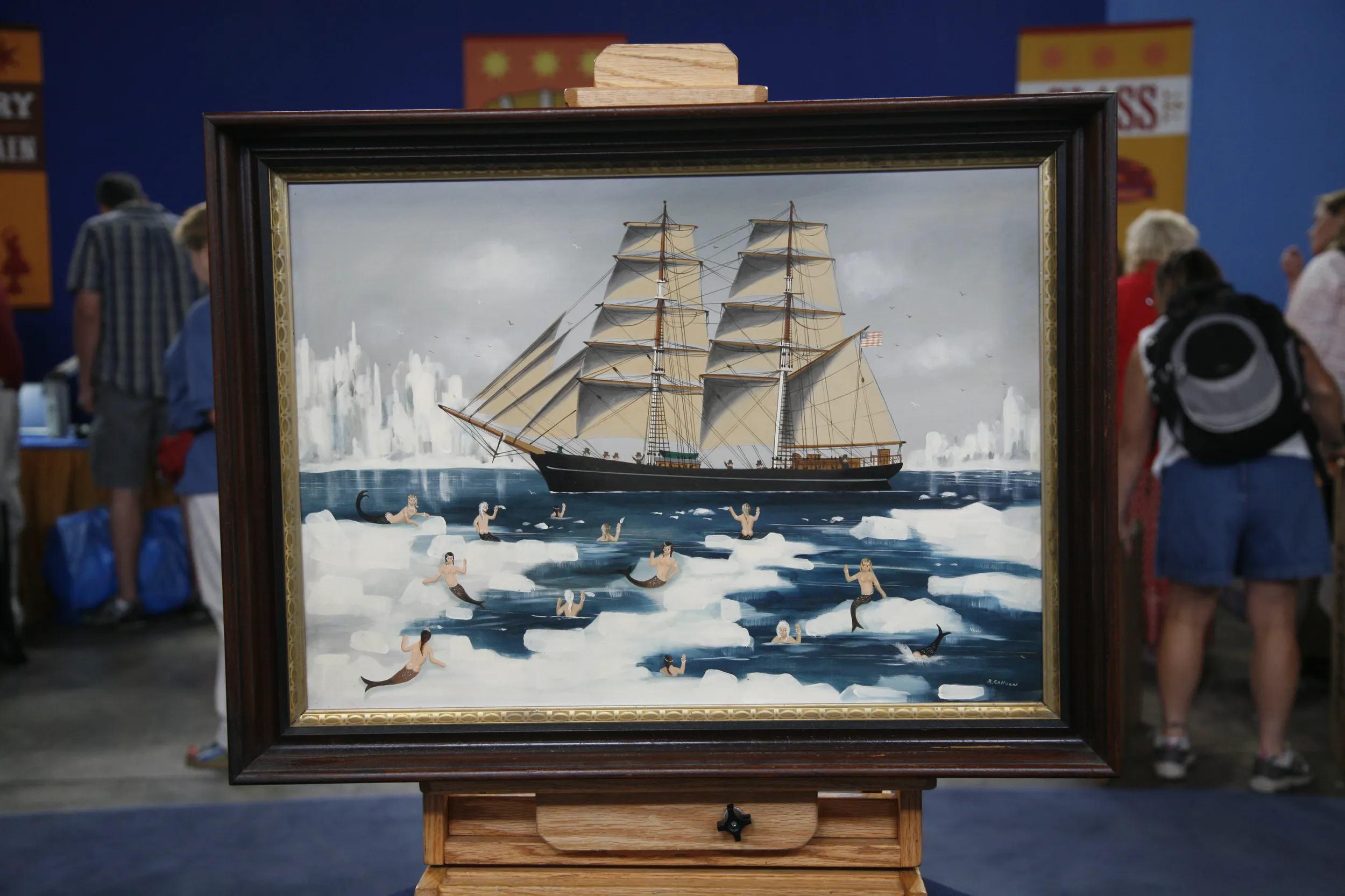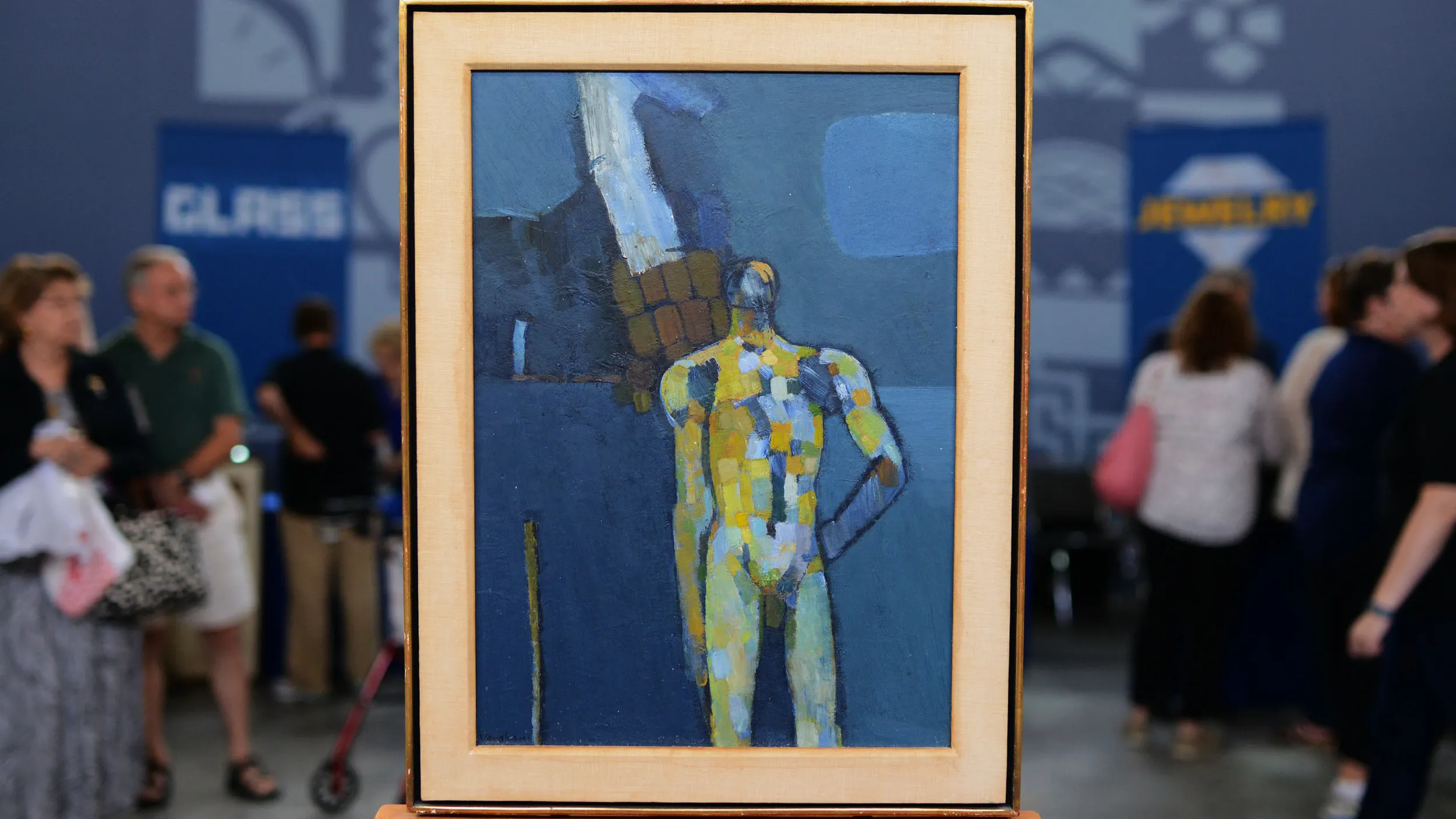GUEST: I got it in Florida, Sarasota, 1987. Saw a garage sale. It was left in the garden. I was attracted to it. I thought it was too skillful to leave behind, so I, I picked it up. (chuckling): I've had it for 28 years.
APPRAISER: And what do you know about the artist?
GUEST: Well, he got involved with American illustration for magazines. And this one, I believe, is for "Outdoor Life."
APPRAISER: Gordon Stevenson is a very, very interesting American painter. He's little-known today, but he was born in Chicago, and was something of an artistic prodigy. At a very young age, he was actually hired to paint mural paintings in several schools in Chicago, which he did, and thankfully, which, I believe, still exist. They were restored as part of a WPA project in the 1930s.
GUEST: Wow.
APPRAISER: He went off to Europe to study when he was still quite a young man. And he studied in Spain with a wonderful, well-known Spanish Impressionist painter named Sorolla.
GUEST: Yeah.
APPRAISER: And, in fact, there is a painting of Mr. Stevenson by Sorolla. He also studied, for a short time, closely with Sargent, and later in life made his living as a portrait painter. And some of the portraits he painted are quite reminiscent of Sargent portraits. During World War I, he was engaged in painting camouflage for the Navy. And a lot of well-known American artists during that period were engaged in the military in various roles, and some of them in painting camouflage. He went on to a career as an illustrator, and doing a lot of covers for Time magazine and portraits, and that sort of thing. But this particular painting is fascinating to me because of the technique. And if we look at this G.I. Joe-type figure, with this sporting theme going on here, as it was, you say, the cover for Outdoor Life magazine. What we have here is a painting that is oil on Masonite, and probably dates from 1939 or 1940, since we know it was an illustration for a magazine cover that was published in 1940. We see how he's incorporated all of these sporting images into creating the image of this character. And maybe you could even describe some of what's going on here. Up here at the top...
GUEST: Top is salmon, salmon fishing.
APPRAISER: There's salmon fishing.
GUEST: It looks like in the Northwest. Then it comes to a bird hunter. And there's ducks which are going through the eye. And then you come down to a fly fisherman with the, with the other eye, which is the pipe. And then at, which, at the cliff of the nose is, is his fly fishing rod. And then beneath that is a chap that's fanning the fire, which is going through his lips. At the dimple in his chin is a frying pan. And going off with the strap is guys that are probably down in the Everglades. And, uh, and then you've got this deer at the, at the neck, and it ends up with the color of his shirt is this tent.
APPRAISER: Exactly.
GUEST: And the Boykin.
APPRAISER: The Boykin being what? For people who don't know.
GUEST: South Carolina's bird dog.
APPRAISER: Exactly. And I understand you've been having some cleaning...
GUEST: Right, yeah.
APPRAISER: ...and conservation work done on the painting. And that you've had some of these areas cleaned.
GUEST: Yeah.
APPRAISER: And now, these white spots we see over here are small losses of pigment.
GUEST: Paint, yeah.
APPRAISER: Now, how much did you pay for it?
GUEST: Well, I looked in my diary, and I paid five dollars for the frame and five dollars for the picture, so ten dollars.
APPRAISER: Well, I think you made a great buy, because, um, first of all, it's beautiful. But secondly, even though, um, Mr. Stevenson is not very well-known today, I think this would easily sell at auction in the between $3,000 and $5,000 range.
GUEST: Wow, wow.
APPRAISER: And possibly a great deal more than that. Although we can't really say for sure.
GUEST: Right, right-- wow.

